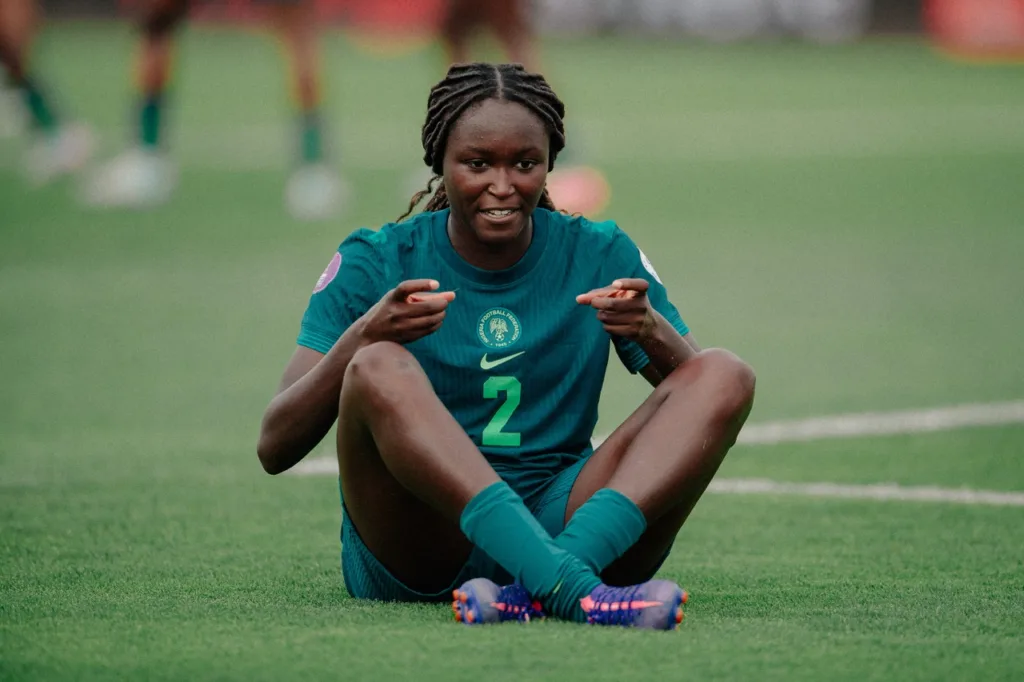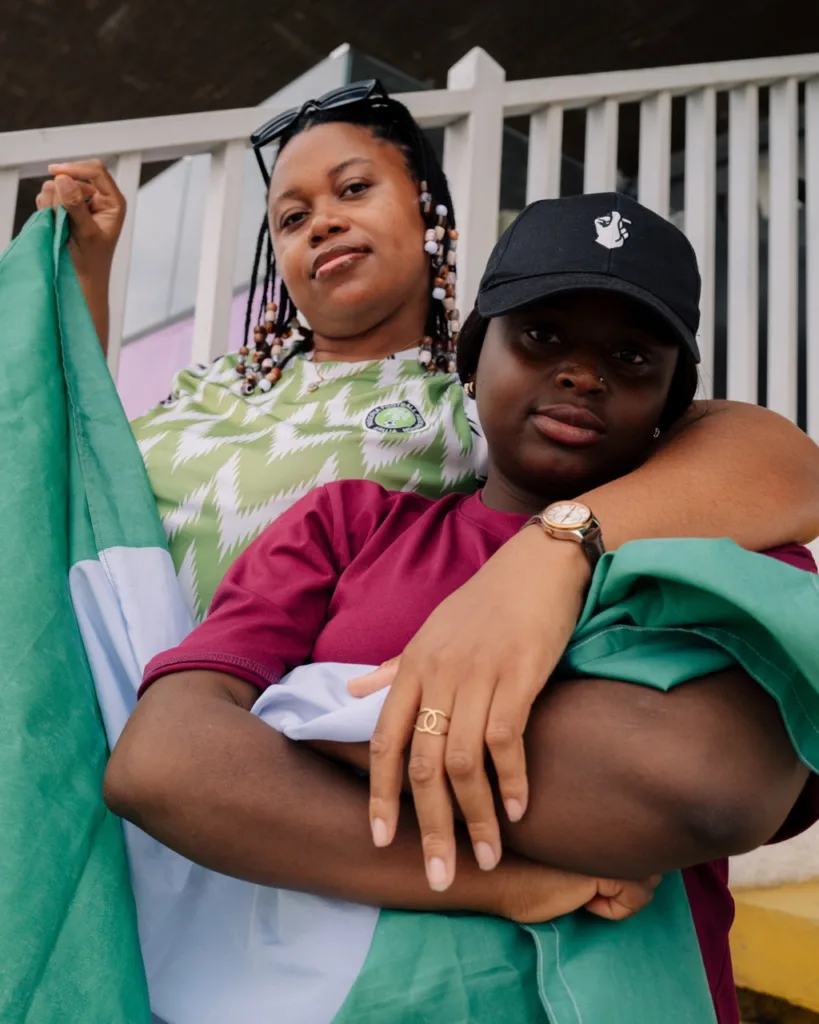 Posted in
Feature, Africa
Posted in
Feature, Africa
Why the Women’s Africa Cup of Nations is the most exciting football tournament of the year
Text Hamza Shehryar
The Women’s Africa Cup of Nations (WAFCON) has kicked off in Morocco, and it might just be the most important football tournament of the year. Not because it mirrors the polish of the Women’s World Cup or the prestige of European competitions, but because it doesn’t.
Africa’s premier women’s footballing competition is something else entirely. A biennial, daring celebration of African womanhood, cultural pride, and the brilliance and talent of the global majority. A tournament rooted in defiance, one that has long been rewriting the rules of who gets to be seen, cheered, and celebrated on the global stage.
Since 1998, WAFCON has redefined what elite football can look and feel like, growing richer with each cycle and offering young people role models who reflect their world. This year, its impact is set to echo far beyond the pitch.












The thirteenth edition of WAFCON will see twelve of the continent’s best sides compete across five cities – Rabat, Casablanca, Mohammédia, Oujda, and Berkane – in a month-long tournament that promises both cultural electricity and sporting intensity. It’s the second consecutive edition hosted by Morocco, after it became the first North African country to stage WAFCON in 2022, and the nation has since positioned itself as one of the beating hearts of women’s football in Africa.
As the tournament unfolds, Football Case Study in collaboration with Nike, will be on the ground in Morocco, documenting the full spectrum of WAFCON’s energy, from stadium atmospheres and matchday drama to the textures of everyday life that shape the tournament beyond the pitch. In many ways, this act of witnessing mirrors the tournament’s evolution as a burgeoning platform for reimagining what football infrastructure, fandom, and storytelling can look like when rooted in African contexts.

But this tournament isn’t just about the women’s game. With Morocco set to co-host the 2030 Men’s World Cup alongside Spain and Portugal, WAFCON also doubles as a showcase of infrastructure, crowd energy, and organisational ambition; not just for Morocco but for the global majority. If the 2022 edition was a breakthrough that smashed attendance records (over 45,000 fans showed up to watch the semi-final and final at the Prince Moulay Abdellah Stadium in Rabat), then this year is the next step. A step towards building a footballing future rooted in the continent, one that prioritises nurturing local talent over importing spectacle.
Confédération Africaine de Football (CAF) data from 2022 shows that the continent now has over 150,000 registered women players, nearly 590 women coaches, and 7,724 women referees, much of it driven by 47 out of 54 national associations investing in grassroots programmes through schools and youth tournaments. These numbers have only grown since, underscoring the pivotal role WAFCON and the rise of women’s football have played in reshaping the African sporting landscape.
Yet gender bias continues to shadow progress. In 2020, WAFCON was cancelled outright due to COVID‑19, while the men’s edition was merely postponed. Women’s football was expendable; men’s was not. Even this year, the tournament – originally scheduled for 2024 – was pushed back to avoid clashing with the Paris Olympics. But these setbacks haven’t triggered retreat. Instead, they’ve fuelled a resurgence. When WAFCON returned in 2022 with an expanded 12-team format, it came back stronger, with record-breaking crowds, surging viewership, and increased prize money.
Since then, empowerment and access have multiplied across the continent. In Tanzania, the U-17 GIFT programme and CAF grassroots festivals have introduced hundreds of girls to football. In South Africa, more than 400,000 women and girls are active in the game through digital platforms and a growing professional league. In Uganda, women’s football is not only dismantling gender stereotypes, it’s also generating jobs, shifting perceptions, and driving social change. These are just a few examples of how football, and WAFCON in particular, has become a powerful bridge to visibility and opportunity.

That growth is being championed not just by institutions, but by players themselves. Nigerian forward and five-time African Women’s Footballer of the Year Asisat Oshoala, for example, has launched the Asisat Oshoala Academy with support from Nike. Focused on empowering girls through football, education, and leadership development, the academy is part of a growing wave of athlete-led initiatives changing the game from the ground up. Players aren’t just showing up on the pitch; they’re building the pathways behind it.
When South Africa’s Banyana Banyana broke Nigeria’s long-standing dominance to win their first WAFCON title in 2022, they also proved that visibility goes beyond mere participation. They became a symbol of progress, pride, and possibility for countless girls across the global majority. That ambition isn’t limited by gender, geography, or tradition. That the pitch can be a place of real, transformative power.

And this transformative power doesn’t aim to mimic European or global tournaments, either. It pulses with its own rhythm. From the music in the stands to the pride on the pitch, it’s a reflection of African identity in motion. Energy that isn’t imported, but is lived and rooted in local histories and rivalries. At the heart of it all is Morocco, a country fast becoming a driving force in women’s football on the continent, hosting the tournament for the second consecutive time, investing in club infrastructure, and spotlighting talent at the grassroots level.
With so much going into growing the women’s game across Africa at every level, naturally, across all twelve teams, the thirteenth edition of WAFCON will be bursting with exciting talent – with cultural figures who are not just leading their nations, but rewriting the expectations of what African women’s football can look like, becoming inspirations for millions.

Zambia’s Barbra Banda is already a continental icon. With over 50 international goals and a 2024 BBC African Women’s Footballer of the Year title to her name, she’s a clinical striker expected to lead the scoring charts. Nigeria’s Joe Echegini, a rising midfield star who also plays for Paris Saint-Germain, is part of a Super Falcons side in transition, bringing flair, intelligence, and a hunger to lead a new era for Africa’s most successful team. And for hosts Morocco, Ibtissam Jraïdi is the face of the Atlas Lionesses: their first-ever Women’s World Cup goalscorer and clinical forward. In her words: “My dream is to lift the WAFCON with my country.” This summer, that dream could become history.
In many ways, Jraïdi’s statement underscores the tournament’s significance and its standing as one of the premier international football tournaments. It carries the pulse of a continent, the dreams of a generation, and the defiance of those rewriting what women’s football can be. And it promises to be fiercely competitive, too. From Morocco’s Atlas Lionesses chasing a historic first title on home soil, to Nigeria’s bid for a record-extending tenth, to South Africa’s drive to defend their crown, the competition promises plenty of drama and inspiration across the continent in the coming weeks, right up until the final on July 26 in Rabat. As FUS Rabat coach Mehdi El Qaichouri put it: “It might trigger young girls to start playing officially or dream of being a professional – and, why not, one day be part of our national team.”
